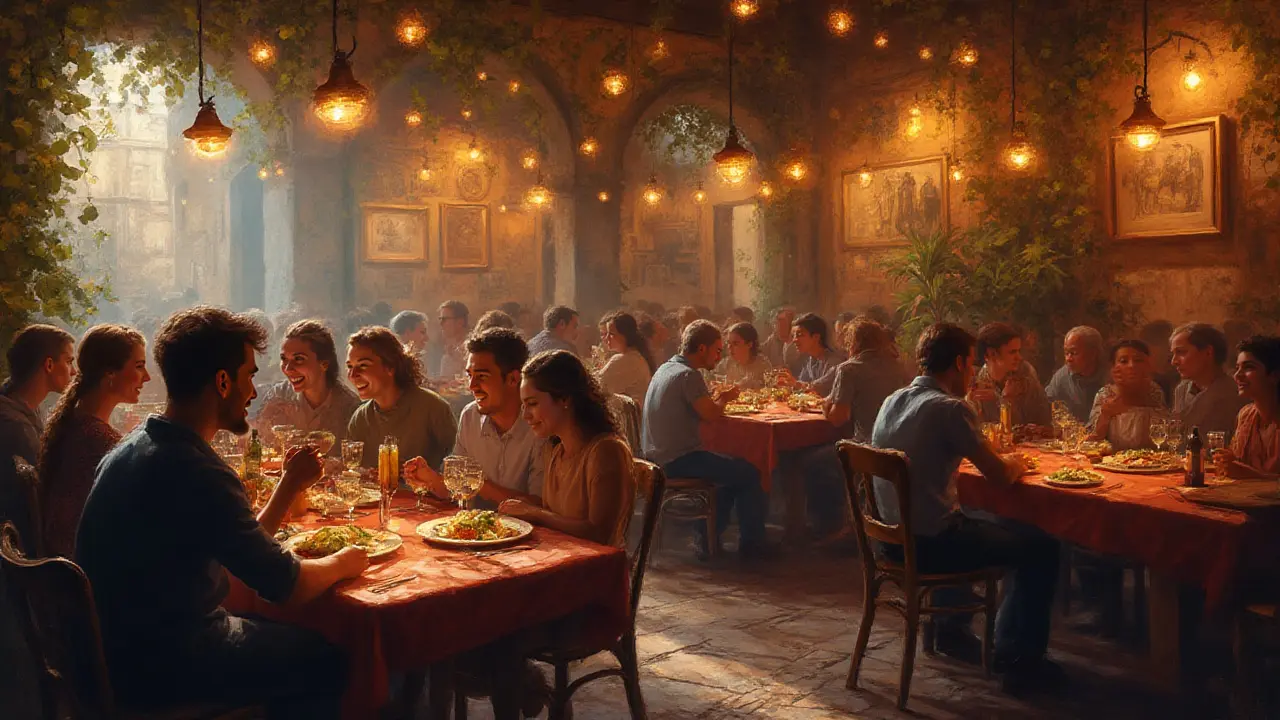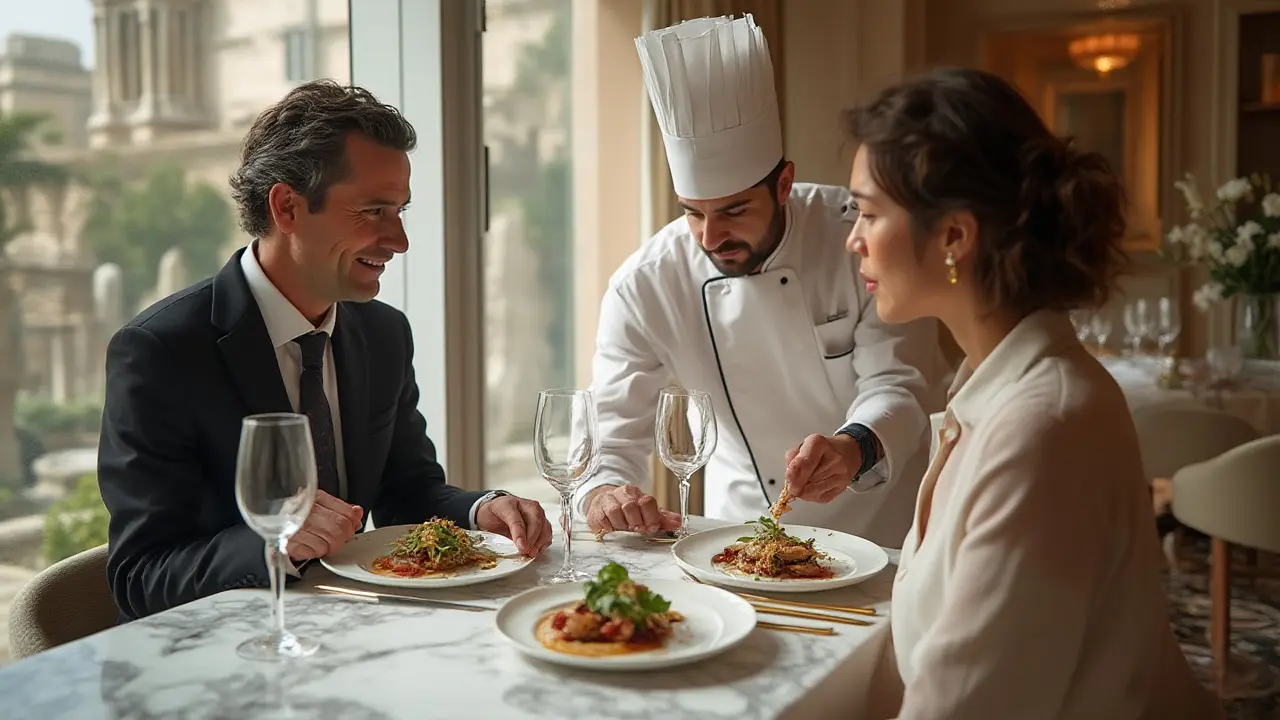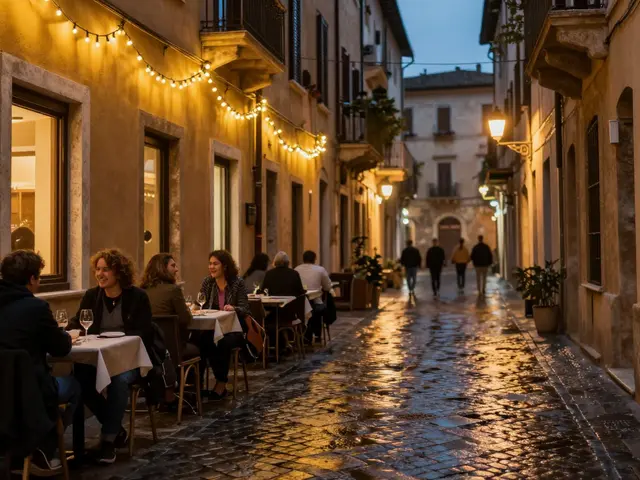
Think you know Italian food? In Rome, every bite proves you wrong. This city isn’t just about pizza and pasta, it’s a full-blown culinary overload. Centuries-old traditions stare you down at lunchtime, while modern chefs push Roman recipes right into the future. Here’s the honest truth: if you only have a handful of meals here, picking the right spots is tougher than getting a Vatican tour without a wait.
Classic Roman Fare: Where Tradition Never Dies
Roman cuisine has always played with essentials: simple ingredients, bold flavors, and the kind of recipes your nonna would approve of. It’s easy to get swept up by the classics—think cacio e pepe, amatriciana, and carbonara. Most travelers flock to well-trodden areas like Trastevere and Campo de’ Fiori, but the real magic happens in the lesser-hyped trattorias dotting Testaccio, Garbatella, or Monteverde. Testaccio, for instance, was the original hub for butchers. That's why you’ll spot lots of offal (yep: stomach, tails, sweetbreads) on menus. Ever had rigatoni alla pajata or coda alla vaccinara? Testaccio does them best, with recipes passed down like family secrets.
Don't skip the humble pizza bianca while wandering the city. It’s more like Roman focaccia—chewy, oily, and laced with sea salt. Bakers like Forno Campo de’ Fiori or the famous Roscioli dish it out still warm from the oven. On the pasta front, plenty of places throw their hat in for ‘best carbonara’ — you’ll hear the name Roscioli come up again, but don’t sleep on Armando al Pantheon (just good luck snagging a table) or the low-key Da Enzo in Trastevere.
Mealtime schedules matter here. Lunch sizzles between 12:30 p.m. and 2:30 p.m., and dinner rarely really gets popping before 8 p.m. Pro tip: If there’s a handwritten menu and grumpy waiters who eventually crack a smile, you’re probably in the right spot. And yes, Romans are serious about ‘al dente’ — ask for your pasta well-cooked and you’ll get some raised eyebrows. But to really play the expert, look for fried artichokes—one dish that Jewish Romans took to the next level. Head over to the Jewish Ghetto, and order carciofi alla giudia from Nonna Betta or Ba’Ghetto.
Modern Roman Eateries: Fresh Twists on Old Traditions
Rome’s traditional dishes are sacred, but new chefs aren’t afraid to challenge the rules. They weave old and new together, and the results are wild—in a good way. Some of the most creative kitchens have earned international shout-outs: just check the Michelin Guide if you’re interested in star-spotting. Glass Hostaria in Trastevere, for example, shakes things up with molecular techniques and freewheeling ingredient combos. Cristina Bowerman, the chef here, reimagines classics in ways that thrill locals and travelers alike.
Then, there are places like Marzapane, where you can taste custom tasting menus without shelling out a fortune. Another name that regularly pops up is Retrobottega, a chef-driven spot near Piazza Navona. Here, you’ll find modern plates that play with wild herbs, ancient grains, and foraged goodies. For something laid-back, try Cesare al Casaletto. It serves fried starters (supplì, croquettes) so good you’ll plan your route just to pass by. The trick here: pair the food with a natural wine from the region.
And for those obsessed with pizza, Rome has its own distinctive version—cracker-thin, crisp everywhere, nothing like Neapolitan. Bonci’s Pizzarium is legendary for their focaccia-like slices topped with all sorts of creative ingredients: think potato and rosemary or mortadella and pistachio cream. They charge by the weight, so you can mix and match options in one go.
If you’re vegetarian or vegan, Rome’s kitchens are waking up to the movement, especially around hip neighborhoods like San Lorenzo and Ostiense. There’s Grezzo for raw, vegan desserts, or Aromaticus for garden-fresh salads and sandwiches. Many traditional trattorias offer hearty vegetarian options—just ask about the ‘contorni’ (side dishes).

Hidden Gems: Beyond the Tourist Path
Some of Rome’s best food is off the radar. Forget the main squares—duck into residential streets and shady courtyards, and you’ll find trattorias where the waiter recognizes every patron and the bill barely dents your wallet. Osteria Bonelli, out in Tor Pignattara, is a local treasure for those who make the trek. The menu is scrawled on chalkboards and changes by the day, but the flavors stay true: spicy amatriciana, tender saltimbocca, and trays of roasted potatoes drenched in olive oil.
Cantina Sociale in Centocelle isn’t fancy, but it nails the basics: hearty Roman plates, affordable wines, and a noisy, cheery crowd. At dining hour, local families and groups of students crowd the tables. You’ll soon realize why so many Romans don’t even bother eating in the historic center. Out in Garbatella, there’s Porto Fluviale, a former warehouse-turned-canteen, where you can eat anything from pizza to Sicilian arancini under one sprawling roof.
The city’s food markets are another untapped goldmine. Mercato Testaccio is packed with stands slinging pizza by the slice, tripe sandwiches, and farm-fresh produce. Early risers can feast on maritozzi (cream-stuffed brioche) paired with a sugar-shot espresso. Not far away, Mercato Centrale Roma inside Termini station offers up everything from regional cheeses to volcanic fried fish. Walk through, snack your way, and people-watch as locals do their shopping.
Tips for Dining Like a Roman
If you want to eat like a local, there are a few key rules. First: slow down. Roman meals are social events, not pit stops. You’re often expected to linger at the table, and waiters won’t bring the bill until asked. For the full experience, order an antipasto (like bruschetta or cured meats), a primo (pasta or risotto), then a secondo (meat or fish), and finish up with a dessert and coffee. It sounds like a lot, but portions can be surprisingly manageable.
Water comes in bottles—still or sparkling, just say ‘naturale’ or ‘frizzante’. Tipping isn’t a big deal in Rome. Locals might leave a euro or two if service was great, but it’s never expected. Don’t be surprised if you see a “coperto” on your bill—that’s the cover charge for bread and table setting.
For wine, order “un quartino” for a small carafe, or go for the house wine—it’s almost always local and good. And don’t stress over reservations at casual spots, but do call ahead for fancier places or anything that’s got a buzz. Most Romans eat late, so be prepared for empty dining rooms at 7, but jam-packed crowds by 9.
Looking for unique Roman dishes? Try trippa alla romana (tripe in tomato sauce), abbacchio (roast lamb), or suppli (rice balls with mozzarella inside). And always end your meal with gelato—Osteria del Gelato or Gelateria del Teatro are serious favorites, offering layered flavors you won’t find anywhere else.
To help plan your meals, here’s a quick table with average prices (as of 2025):
| Dish | Average Price (€) |
|---|---|
| Cacio e Pepe | 12 |
| Pizza Margherita | 9 |
| Supplì (each) | 2.5 |
| Carciofi alla Giudia | 8 |
| Gelato (regular cone) | 3 |
Rome is a true food lover’s dream, so don’t play it safe. Get lost in side streets, trust your nose, and remember: half the fun is just discovering where the locals are fighting for a table. If you spot a place packed with Romans, you’re probably about to stumble onto your best meal yet. And if someone next to you starts raving about a secret spot for amatriciana? Order it. The city’s best dishes are often the ones you didn’t even know you were looking for. That’s what makes Rome restaurants a journey in itself.



